To install a doorbell transformer, first, turn off the power supply. Then, locate the existing doorbell transformer and disconnect the wires.
When it comes to installing a doorbell transformer, following the necessary safety precautions is crucial. In this guide, we will walk you through the step-by-step process of installing a doorbell transformer without any hassle or complications. We will provide you with clear instructions on how to safely disconnect the wires from the existing transformer and install the new one efficiently.
By the end of this guide, you will have successfully installed a doorbell transformer, ensuring your doorbell system is functioning properly and reliably. So, let’s get started and make your doorbell system more efficient!
Understanding Doorbell Transformers
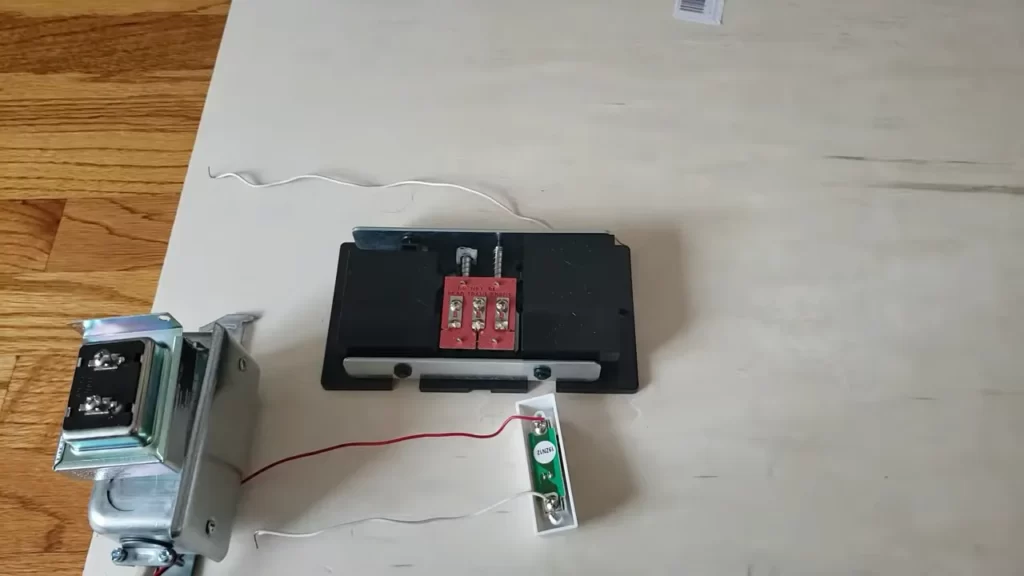
Doorbell transformers are essential components of any doorbell system. They play a crucial role in ensuring that your doorbell functions properly, delivering that familiar chime when someone rings the bell. In this section, we will delve into how doorbell transformers work and the importance of a properly installed transformer.
How doorbell transformers work
A doorbell transformer is a small electrical device that converts the standard 120-volt household electrical current to a lower voltage suitable for doorbell operation. It steps down the voltage to typically between 16 and 24 volts, which is safe for the doorbell and prevents any potential damage caused by high voltage.
Doorbell transformers operate using electromagnetic induction. When the doorbell button is pressed, it completes an electrical circuit, which triggers a magnetic field in the transformer. This field induces a low voltage in the secondary coil of the transformer, which is then sent to the doorbell chime, activating the chime.
Importance of a properly installed doorbell transformer
A properly installed doorbell transformer is vital for ensuring the smooth functioning of your doorbell system. Here’s why:
- Reliable power source: A correctly installed transformer provides a reliable power source for your doorbell. It ensures consistent voltage to the doorbell chime, preventing any issues with the chime not ringing or sounding weak.
- Protection against damage: By stepping down the voltage, the transformer protects your doorbell system from damage that could be caused by high voltage. This helps prolong the lifespan of your doorbell and prevents expensive repairs or replacements.
- Compatibility with various doorbell models: Different doorbell models require specific voltage to operate optimally. A properly installed transformer ensures compatibility with your particular doorbell model, guaranteeing that it functions at its best and produces the desired sound quality.
- Easy troubleshooting: If your doorbell system encounters any issues, a properly installed transformer makes troubleshooting easier. You can eliminate the transformer as a potential cause of the problem and focus on other areas of the system for diagnosis.
- Compliance with electrical safety standards: Properly installing a doorbell transformer ensures compliance with electrical safety standards. It reduces the risk of electrical hazards and enhances the overall safety of your home.
Now that you understand how doorbell transformers work and the importance of a properly installed transformer, let’s move on to the step-by-step process of installing a doorbell transformer in the next section.
Choosing The Right Doorbell Transformer
When it comes to installing a doorbell transformer, choosing the right one is crucial. The doorbell transformer is responsible for supplying the correct voltage to power your doorbell system, ensuring it functions properly. In this section, we will discuss the important factors to consider when selecting a doorbell transformer.
Factors to consider when selecting a doorbell transformer
To make sure you choose the right doorbell transformer, there are a few key factors you need to bear in mind. These factors will help you determine the suitable transformer for your specific needs.
Matching voltage requirements
One of the most important aspects to consider is the voltage requirements of your doorbell system. It is essential to match the voltage output of the transformer to the voltage required by your doorbell. Usually, residential doorbells require transformers with a voltage rating of 16 to 24 volts. If the voltage is too low, the doorbell may not function correctly, and if it is too high, it can potentially damage the doorbell or even pose a safety hazard. Therefore, always double-check the voltage requirements before purchasing a transformer.
Differences between wired and wireless transformers
When choosing a doorbell transformer, you also need to consider whether you prefer a wired or wireless option. Here are the key differences between the two:
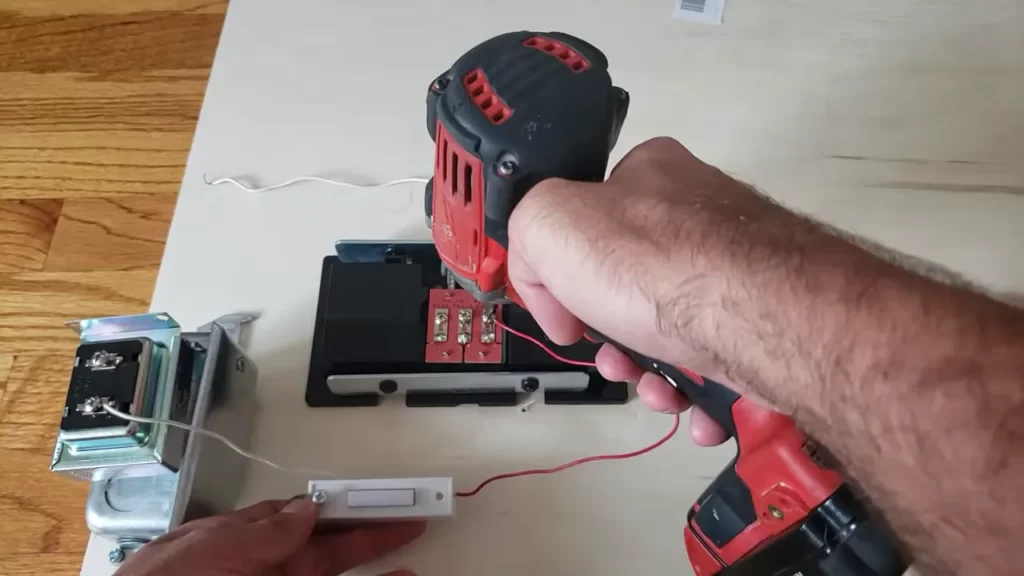
| Wired Transformers | Wireless Transformers |
|---|---|
| Requires physical wiring | No need for wiring installation |
| Stable and consistent power supply | Relies on batteries or solar power |
| Typically more affordable | Usually more convenient and flexible |
Consider your specific requirements and preferences before deciding between wired and wireless transformers. If you already have an existing wired doorbell system, it might be more practical to stick with a wired transformer. On the other hand, a wireless transformer can be a suitable choice if you desire a hassle-free installation process or plan to go wireless with your entire doorbell system.
By understanding these important factors and considering your individual needs, you can confidently choose the right doorbell transformer for your home. A suitable transformer will ensure your doorbell system functions optimally, providing convenience and peace of mind.
Tools And Materials Needed
Installing a doorbell transformer is not a complicated task, but having the right tools and materials at hand will ensure a smooth and successful installation. In this section, we will outline the list of tools required for the installation process as well as the necessary materials you will need. Let’s dive in!
List of tools required for the installation process
Before you begin installing your doorbell transformer, make sure you have the following tools ready:
- Power screwdriver: A power screwdriver will make it easier to remove any existing screws or attachments.
- Wire stripper: You will need a wire stripper to remove the insulation from the wires.
- Wire nuts: These are used to secure the wires together. Make sure you have a variety of sizes on hand.
- Voltage tester: A voltage tester is essential for checking if the power is off before starting the installation.
- Circuit tester: This tool will help you identify the correct circuit breaker for your doorbell transformer.
- Pliers: Pliers are handy for gripping and bending wires.
- Tape measure: A tape measure will come in handy for measuring the distance between the transformer and the doorbell.
- Drill: You may need a drill to create holes for mounting the transformer.
Necessary materials for a successful installation
In addition to the tools mentioned above, you will also need the following materials:
- Doorbell transformer: This is the main component that steps down the voltage from your household electrical system to power the doorbell.
- Doorbell wires: These wires are used to connect the transformer to the doorbell and the chime.
- Mounting screws: You will need screws to secure the transformer in place.
- Electrical tape: Electrical tape is used to secure and insulate the wire connections.
- Wire connectors: Wire connectors are used to join wires securely and prevent any accidental contact.
- Chime: The chime produces the sound when the doorbell is pressed. Make sure to choose a chime that is compatible with your doorbell transformer.
Now that you have a comprehensive list of the tools and materials needed for installing a doorbell transformer, you can confidently proceed with the installation process. Remember to always prioritize safety and follow the manufacturer’s instructions for the specific model you are using.
Step-By-Step Installation Process
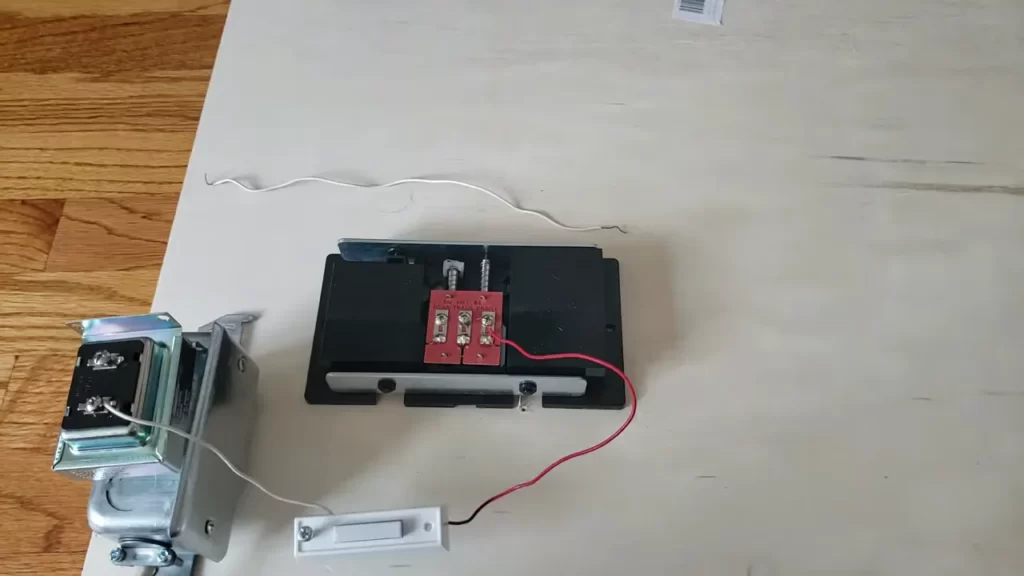
Installing a doorbell transformer may seem like a daunting task, but with the right guidance and a little bit of patience, it can be accomplished successfully. Follow these steps to ensure a smooth and hassle-free installation process:
1. Locating the Existing Wiring
The first step in installing a doorbell transformer is to locate the existing wiring. You’ll need to find the wires that connect the doorbell button to the transformer. These wires are typically hidden behind the wall, so you may need to use a voltage detector or consult the original installation plans if available.
2. Turning off the Power Supply
Before working with any electrical components, it’s crucial to turn off the power supply. Locate the circuit breaker in your electrical panel that controls the doorbell circuit and switch it off. Use a voltage tester to ensure that there is no electricity running through the wiring before proceeding.
3. Removing the Old Transformer
With the power turned off, carefully remove the old doorbell transformer from the wall. Typically, these transformers are mounted near the electrical panel or in a utility area. Unscrew the mounting screws and detach the wires connected to the transformer. Take note of the wire color coding or make a diagram to ensure proper reconnection later.
4. Mounting the New Transformer Securely
Once the old transformer has been removed, it’s time to mount the new one securely. Choose a location near the original transformer or as close to the electrical panel as possible. Use screws or mounting brackets provided with the transformer to fix it in place. Ensure that the transformer is level and will be easily accessible for future maintenance.
5. Connecting the Wiring Properly
Now it’s time to connect the wiring to the new transformer. Strip the ends of the wires if necessary and connect them to the corresponding terminals on the transformer. If unsure, refer to your manufacturer’s instructions or consult a professional. Double-check that the connections are secure before moving on to the next step.
6. Testing the Transformer and Doorbell Functionality
With the wiring connected, it’s essential to test the transformer and doorbell functionality. Turn the power supply back on and use a voltage tester to ensure that there is power going to the transformer. Press the doorbell button to check if the doorbell chimes correctly. If everything is working as expected, you’ve successfully installed a doorbell transformer.
Troubleshooting Common Issues
Identifying potential problems during installation
Installing a doorbell transformer may seem straightforward, but sometimes things don’t go as planned. Before you start troubleshooting common issues, it’s crucial to identify potential problems during the installation process. Doing so will save you time and frustration, ensuring that your doorbell transformer works smoothly.
Here are some potential problems you may encounter:
- Incorrect wiring: Make sure you have followed the manufacturer’s instructions for proper wiring. Double-check all connections to ensure they are secure and in the correct position.
- Insufficient power source: If your doorbell transformer is not receiving enough power, it may lead to inconsistent performance. Check if there is an adequate power supply or if there are any power fluctuations in your home.
- Compatibility issues: Some doorbell transformers are only compatible with specific doorbell models. Ensure that the transformer you are using is compatible with your doorbell system. Refer to the instruction manual or consult with a professional if you are unsure.
- Faulty equipment: Occasionally, the doorbell transformer itself may be faulty. This can happen due to manufacturing defects or wear and tear over time. If you suspect a faulty transformer, it might be necessary to replace it.
Resolving issues with low voltage or inconsistent performance
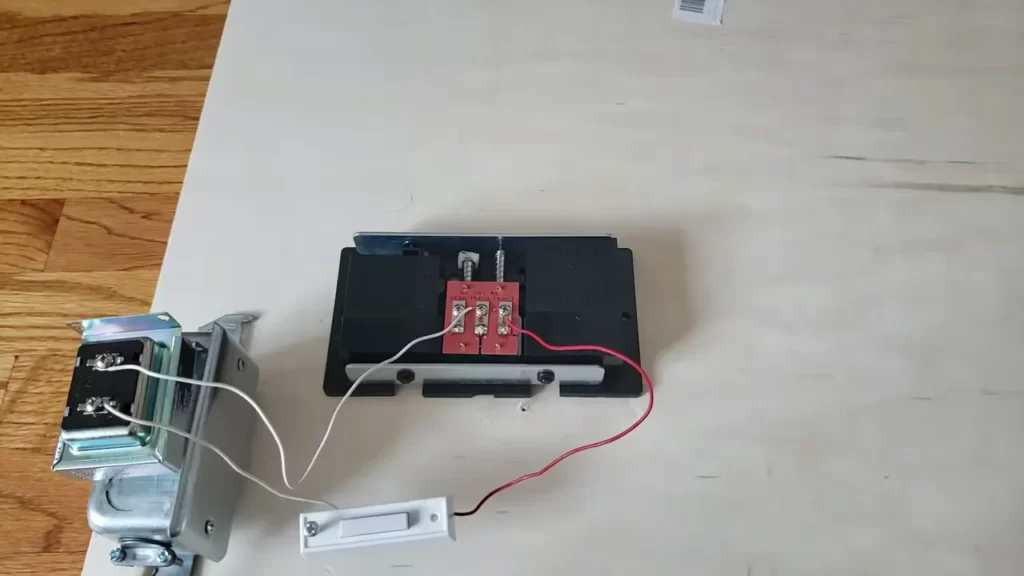
Once you have identified potential problems during installation, it’s time to troubleshoot issues related to low voltage or inconsistent performance. These problems can be frustrating, but don’t worry, there are steps you can take to resolve them:
- Check the voltage: Measure the voltage output of your doorbell transformer using a multimeter. The voltage should be within the specified range mentioned by the manufacturer. If the voltage is too low, you may need to replace the transformer with a higher-rated one.
- Inspect the wiring: Ensure that all wiring connections are secure and properly connected. Loose or frayed wires can cause low voltage or inconsistent performance. Replace any damaged wires and tighten any loose connections.
- Verify the chime settings: If your doorbell chime is not working correctly or producing a weak sound, check the chime settings. Some doorbell systems have adjustable volume settings that may need adjustment. Refer to your doorbell system’s manual for instructions on how to adjust the chime settings.
- Consider adding a bypass resistor: In some cases, adding a bypass resistor to the doorbell circuit can help resolve low voltage issues. This resistor acts as a load to ensure a steady flow of current. Consult the manufacturer’s guidelines or seek professional assistance for the correct resistor specifications and installation process.
Troubleshooting common issues with doorbell transformer installation can be a bit tedious, but with patience and attention to detail, you can overcome them. Remember, if you’re unsure about any step or encounter persistent issues, it’s always wise to consult a professional electrician or seek guidance from the manufacturer.
Safety Tips For Doorbell Transformer Installation
Installing a doorbell transformer can be a relatively simple task, but it is important to prioritize safety throughout the entire process. By following these safety tips, you can ensure a smooth and secure installation.
Ensuring safety precautions are followed
Before you even begin the installation process, it is important to take the necessary safety precautions. Here are a few key steps to keep in mind:
- Turn off the power: Before you start working on the doorbell transformer, ensure that the power is turned off at the circuit breaker. This will eliminate the risk of electric shocks.
- Use appropriate personal protective equipment (PPE): When handling electrical components, it is essential to protect yourself. Wear safety goggles, insulated gloves, and appropriate clothing to prevent any accidents.
- Read the manufacturer’s instructions: Each doorbell transformer may have specific safety instructions provided by the manufacturer. Make sure to read and understand these instructions before starting the installation.
Avoiding electrical hazards
When it comes to working with electrical components, it is crucial to avoid potential hazards. Follow these guidelines to minimize the risk of accidents:
- Inspect the wiring: Before installing the new doorbell transformer, check the condition of the existing wiring. Any frayed or damaged wires should be replaced to prevent electrical hazards.
- Do not overload the circuit: Ensure that the new doorbell transformer is compatible with the electrical system of your home. Overloading the circuit can lead to overheating and potential fire hazards.
- Secure connections: When connecting wires, make sure they are properly stripped and tightly secured. Loose connections can cause electrical arcing, leading to sparks and potential injuries.
Handling wiring and connections safely
Proper handling of wiring and connections is essential for a safe and successful doorbell transformer installation. Follow these tips to ensure safety:
- Work in a well-lit area: Adequate lighting will help you see the wires and connections clearly, reducing the risk of mistakes or accidents.
- Label the wires: Before disconnecting any wires, make sure to label them to avoid confusion during the reconnection process.
- Use wire connectors: Instead of relying on tape or other temporary solutions, use proper wire connectors to join wires together securely.
By adhering to these safety tips, you can install a doorbell transformer with confidence and peace of mind. Remember to always prioritize safety throughout the process and consult a professional if you have any doubts or concerns.
Expert Tips And Best Practices
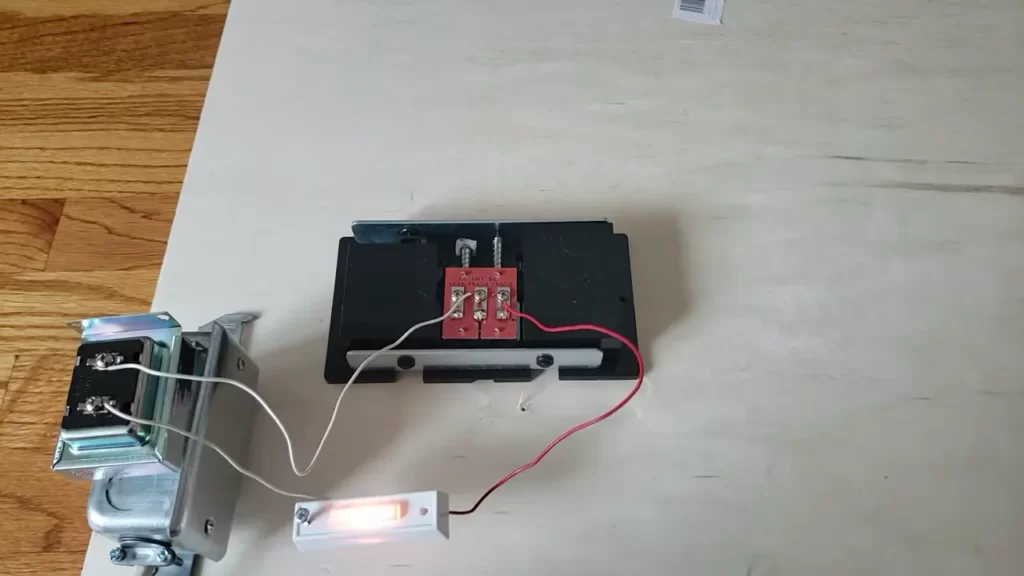
When it comes to installing a doorbell transformer, following expert tips and best practices can make the process smoother and more efficient. Experienced installers have recommended techniques that can save time and effort while ensuring a successful installation. In this section, we will explore these tips and best practices to help you install your doorbell transformer like a pro.
Recommended techniques from experienced installers
Experienced installers have devised some techniques that can streamline the installation process. By following these recommendations, you can avoid common pitfalls and achieve better results. Here are a few techniques experts swear by:
- Choose the right location: Before starting the installation, carefully select the location for your doorbell transformer. It should be easily accessible and away from any moisture or extreme heat sources. This will ensure the longevity of the transformer and prevent any potential damages.
- Properly ground the transformer: Grounding the transformer is crucial for both safety and functionality. Make sure to connect the grounding wire securely to a metal conduit or grounding screw. This will protect your doorbell system from power surges and ensure optimal performance.
- Label the wiring: To avoid future confusion or troubleshooting issues, label each wire with its corresponding connection point. This will make it easier to identify the correct wires when replacing or repairing the transformer.
- Test before finalizing: Before securing the transformer and completing the installation, it’s essential to test the doorbell system to ensure it’s working correctly. Use a multimeter to check the voltage and test the doorbell buttons to verify if they trigger the chime. This step will save you from potential headaches down the line.
Maximizing efficiency and effectiveness during installation
Efficiency and effectiveness are crucial when installing a doorbell transformer. By following these best practices, you can maximize your efficiency and achieve a successful installation:
- Prepare the necessary tools and materials: Before you begin, gather all the tools and materials required for the installation. This includes screwdrivers, wire strippers, electrical tape, and the doorbell transformer itself. Having everything ready at hand will save you time and prevent unnecessary interruptions.
- Plan the wiring route: Before running the wires, carefully plan the route to ensure they are hidden and protected. Avoid areas prone to damage or interference, such as sharp edges or electrical sources. By strategizing the wiring route, you can minimize potential issues during installation.
- Use wire connectors: To achieve secure and reliable connections, use wire connectors instead of simply twisting the wires together. Wire connectors provide better conductivity and protect against loose connections or accidental disconnections.
- Follow the manufacturer’s instructions: Each doorbell transformer may come with specific instructions provided by the manufacturer. It’s essential to carefully read and follow these instructions to ensure the installation is done correctly and to prevent any potential damage to the transformer.
By implementing these expert tips and best practices, you can confidently install your doorbell transformer with efficiency and effectiveness. Remember to prioritize safety and precision throughout the process, and you’ll have your doorbell system up and running in no time.
Frequently Asked Questions For How To Install A Doorbell Transformer
Do You Need An Electrician To Install A Doorbell Transformer?
No, an electrician is not required to install a doorbell transformer. It can be a DIY project with proper instructions and precautions.
Where Do You Install Doorbell Transformer?
Install the doorbell transformer near an electrical outlet or junction box, preferably in a hidden location close to your front door. Ensure it is mounted securely and wired properly for the doorbell to function effectively.
Is It Hard To Install A Doorbell Transformer?
Installing a doorbell transformer is not difficult. It is a straightforward process that can be done by following simple instructions. Ensure you have the right tools and safety precautions.
How Do You Connect A Doorbell To A Transformer?
To connect a doorbell to a transformer, locate the transformer’s low-voltage wiring terminals. Connect one wire from the doorbell to the transformer’s “C” or “Common” terminal, and the other wire to the transformer’s “V” or “Voltage” terminal. Make sure to follow the manufacturer’s instructions for proper installation.
How Do I Know If I Need A Doorbell Transformer?
You will need a doorbell transformer if your current doorbell chime is not working properly or if you are installing a new doorbell system.
Conclusion
To conclude, installing a doorbell transformer is a simple task that can greatly enhance your home’s functionality and convenience. By following the step-by-step procedures outlined in this guide, you can successfully complete the installation process without the need for professional assistance.
Remember to prioritize safety precautions, such as turning off the power supply, and take your time to ensure each connection is secure. With a new doorbell transformer in place, you’ll never miss a visitor again!
